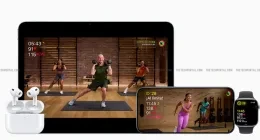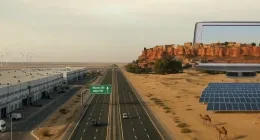On Thursday, Qualcomm Inc showed off a technology that has the potential to drive up adoption of electric vehicles. The tech is known as dynamic charging, and it allows a moving electric vehicle to be charged wirelessly. The best thing about the charging process is that the amount of human intervention required is exactly zero.
The tests took place on a track in Versailles, France. Two Renault Kangoo vehicles were used in the test and the road was embedded with pads that managed to charge the batteries up to 20 Kilowatts at high speeds. This test is in accordance with expectations that the cars of the future will be self-driving and that, minimal human intervention will be required even while charging them.
Wireless charging of course, is hugely important and has implications in areas beyond smartphone charging (which is easily the most popular application of the same). The niche has a slew of companies operating in an attempt to make a technological breakthrough, including start-ups like xChargepoint, WiTricity and HEVO Power.
Qualcomm’s association with the niche stems from the fact that it makes automotive chips for what could well be the self-driving cars of tomorrow. The company recently acquired NXP Semiconductors in a deal valued at $38 Billion and if regulators give that deal a green light, this could well lead to Qualcomm’s dominance in chips for both smartphones and automobiles.
The important factor here would be delivery of power. We want the pad to deliver it quickly, so that the vehicle owner does not have to stop his car over the pads. But, we also want it to be safe enough so that the vehicles don’t explode. Charging and discharging is easy through capacitors however, the method of delivery and the speed at which this is done will be the key questions here.
Meanwhile, much information isn’t available about the tests. However, it is easy to see how they could work out. Assuming that the tech sustains it, we could have these pads embedded at various places on our roads. There could be a vehicle identification system embedded within each of these pads and the vehicle passing over them would be charged as well as identified. The owner could then pay for the service he receives on a pre-paid or a post paid basis.
So basically, never step out of your car for gas again!
The Tech Portal is published by Blue Box Media Private Limited. Our investors have no influence over our reporting. Read our full Ownership and Funding Disclosure →






